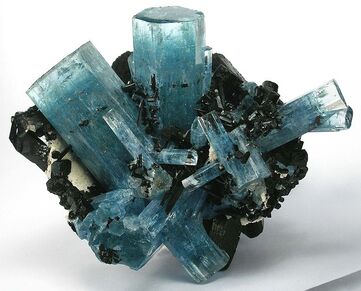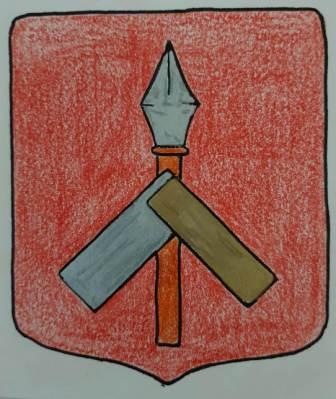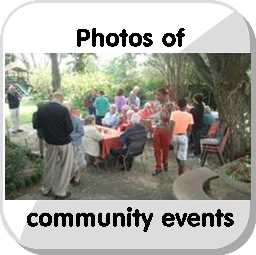The Transmutation from Death into New Lifeby Rev. Reingard Knausenberger It was Thomas who stepped forward with clear intent: ‘Let us go and die with him’. The other disciples were fearful and anxious about following Jesus when he announced he was going to Jerusalem to Lazarus, who had died. Thomas witnessed the mighty realisation rise up in Jesus Christ as he was moved to speak it out: I Am the Resurrection and the Life! Then came the command, calling forth Lazarus from the tomb and into a life after a death experience. Lazarus was a deeply changed man after that. What had he experienced? Thomas will have been alert, watching, listening, even questioning. What was dying about? Was it possible to comprehend it? Moreover, Lazarus’ discipleship had led him into this place … is this what following Christ meant? And then: Let us go and die with him had suddenly taken on an unimaginable reality and scope. The piercing finality of seeing, even feeling, the nailing to the cross, was too much for Thomas. The stark reality of the material world where the end result of everything was death, dissolving, separation, falling apart into nothingness, for Thomas the world crashed into a spiral of unconnected contradictory elements. Where was God? Where had the power gone which held everything together in meaningful relationship and cohesion? Senseless confusion. No hold. Everything estranged. Then numb emptiness. Descending darkness. Touching the void. ‘The grave is empty. We have seen Him! He lives!’ – not possible! A dead body cannot pull itself together and live again. But what I do know is that he was vulnerable, like all of us, hurt and suffered, bled and died. He was human like me, and the scars of wounds from this earthly life must show. They will be part of his identity. Now, Thomas allowed himself to feel his body, his aching heart, his vulnerability. I am still here, breathing. But no willpower. Then the stillness. Staying in that place. Wrestling. Accepting. Tempted to just let go. Give up. Let myself fall…a-part. The grave is empty? My soul is empty. Memories arise, fulfilling and joyous, words of comfort. Painful memories, and shame. Welcoming them all. Allowing. A gentle light enters the darkness with them. A new power, ever so subtle. Very real. Who was this, who was I? Now, Essential Beingness becomes tangible. It holds itself in itself. Yet it cannot be held onto. Alive and in motion, in wholeness, allows moments of in-sight. ‘Give your finger, see my hands, … Become trusting!’ Decide to step into motion, into the movement you initiate. Move towards me, then I can come towards you. Just begin. Then life begins, and becoming. ‘God of my Self! Lord of my I!’ You are the power that connects to the Father, the source who holds All in wholeness. You are the might that ignites my inner Self. You are the deepest power, the foundation upon which human nature and the universe builds anew, inside-out. Thomas from the talks on the twelve apostles of the New Jerusalemby Rev. Michaël Merle Thomas is not a name as much as it is a description. In Aramaic the word the-o-ma means ‘the twin’. In Greek the twin translates as didymus. Therefore, calling this man Thomas Didymus was to call him ‘The Twin, The Twin’. This reference to him being called twin may be as a result of his having been born a twin but it may mean that he had a connection to a brotherhood, or that he held an intimate friendship amongst the twelve, as close to each as a twin. Thomas is best known for not being in the locked Upper Room with the disciples when Christ breathed The Holy Spirit on the disciples. When he is told of their experience he says: “I must rely on my own investigation to confirm that which I can see. I cannot take the word of another to replace what must be for me my experience.” One could say, Thomas was the first scientist in the Goethean tradition. Rudolf Steiner shares something of significance about Thomas touching Christ. In a lecture given on 8 August 1920, Steiner reverses the order of the senses placing Touch as the fourth sense after Life (well-being), movement and balance. This allows us to view touch as a higher sense that rests upon the movement of our inner soul reflection, and the sense of balance that brings rest to this soul reflection. Steiner describes how the world around us has a reality that gives us the possibility for our inward soul to be permeated with a feeling of God. This is the experience that Thomas has in touching the Risen Christ. Thomas is the only disciple invited to touch Christ, using his senses to confirm the reality of the experience. We must recall that Christ said to Mary Magdalene in the garden when she met him on the first day after the Resurrection: “Do not touch me”. In The Christian Community our sense impressions are all focused on the altar; we direct ourselves towards a sense impression of the spiritual world. Thomas had a relationship to Jesus of Nazareth who was the Christ in a human being. After touching the Risen Christ he comes to a new relationship to the Christ without the physical body of Jesus. The Christ tells us that there are other paths to the Christ besides the path of Thomas. Thomas’ path is that of a physical sense seeker. It is certainly a valid path for us as modern human beings. Thomas says, in John’s Gospel: “Let us go with him to our death”. He understands that there must be an initiation process. Our sacraments also call us to cross a threshold, it is also an initiation. Tradition holds that Thomas went to India. When Christian missionaries came to India from the late fifteenth century they found there already a Christian sacrament and community. The Syro-Malabar rite practices in the Eastern Catholic Major Archiepiscopal Church based in Kerala, India is attributed to Thomas bringing Christianity to India.  Beryl Beryl Thomas is connected with Leo and the Stone of the Foundation of the New Jerusalem, beryl. Beryl is a deep, precious aquamarine – the colour of the sea. It speaks to compassion leading to freedom. Compassion can be described as a warm, tender, loving mercy. It is heart’s sacrifice with which to feel.
0 Comments
|
Follow us on Twitter. We put reminders of events and notices on Twitter.
Article Archives
December 2021
2023 - January to December
2022 - January to December 2020 - January to December 2019 - January to December 2018 - January to December 2017 - January to December 2016 - January to December 2015 - January to December 2014 - November & December 2013 - July to December 2013 - January to June 2012 - April to December Send us your photos of community events.
Articles (prefaced by month number)
All
|



 RSS Feed
RSS Feed